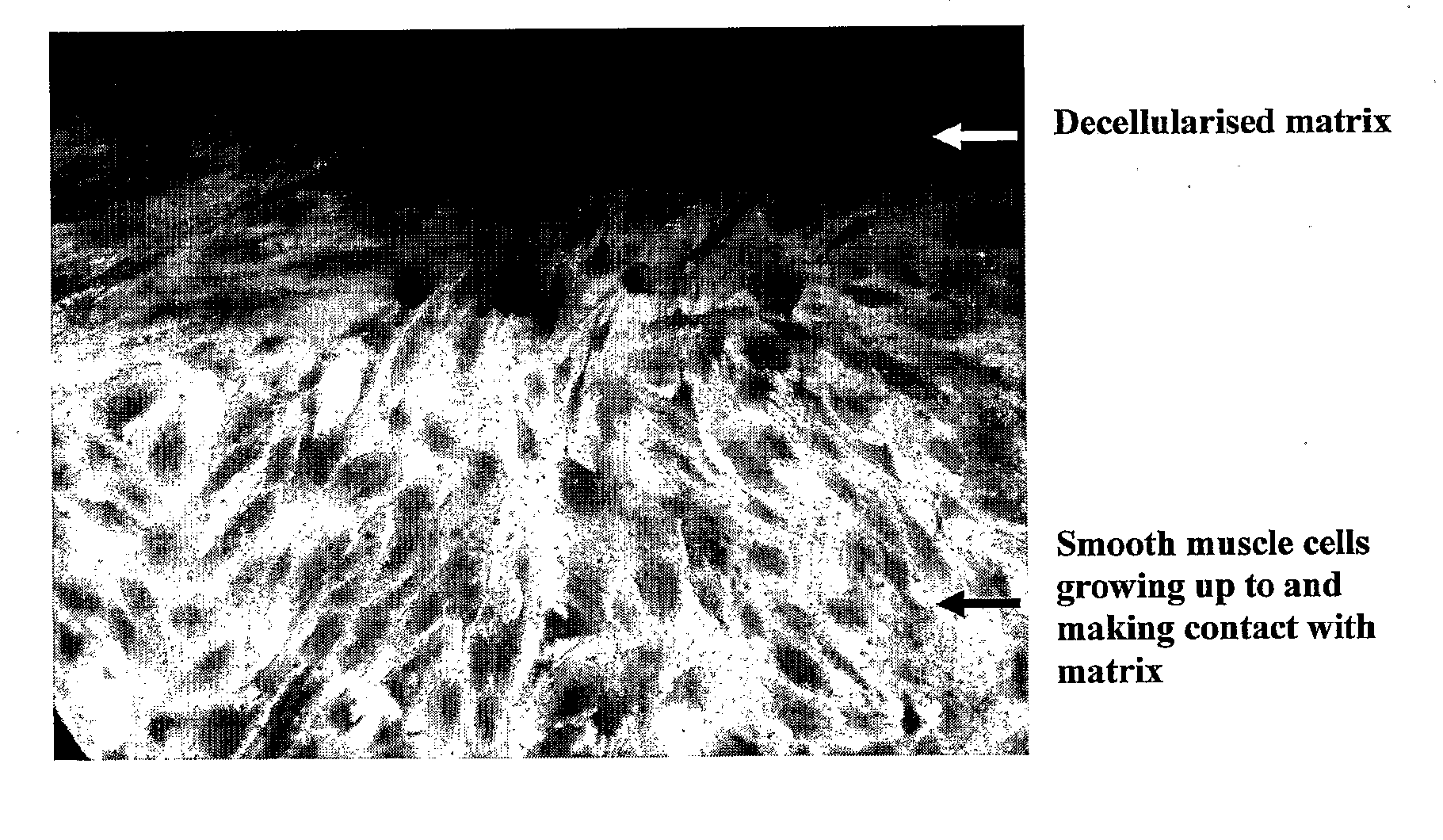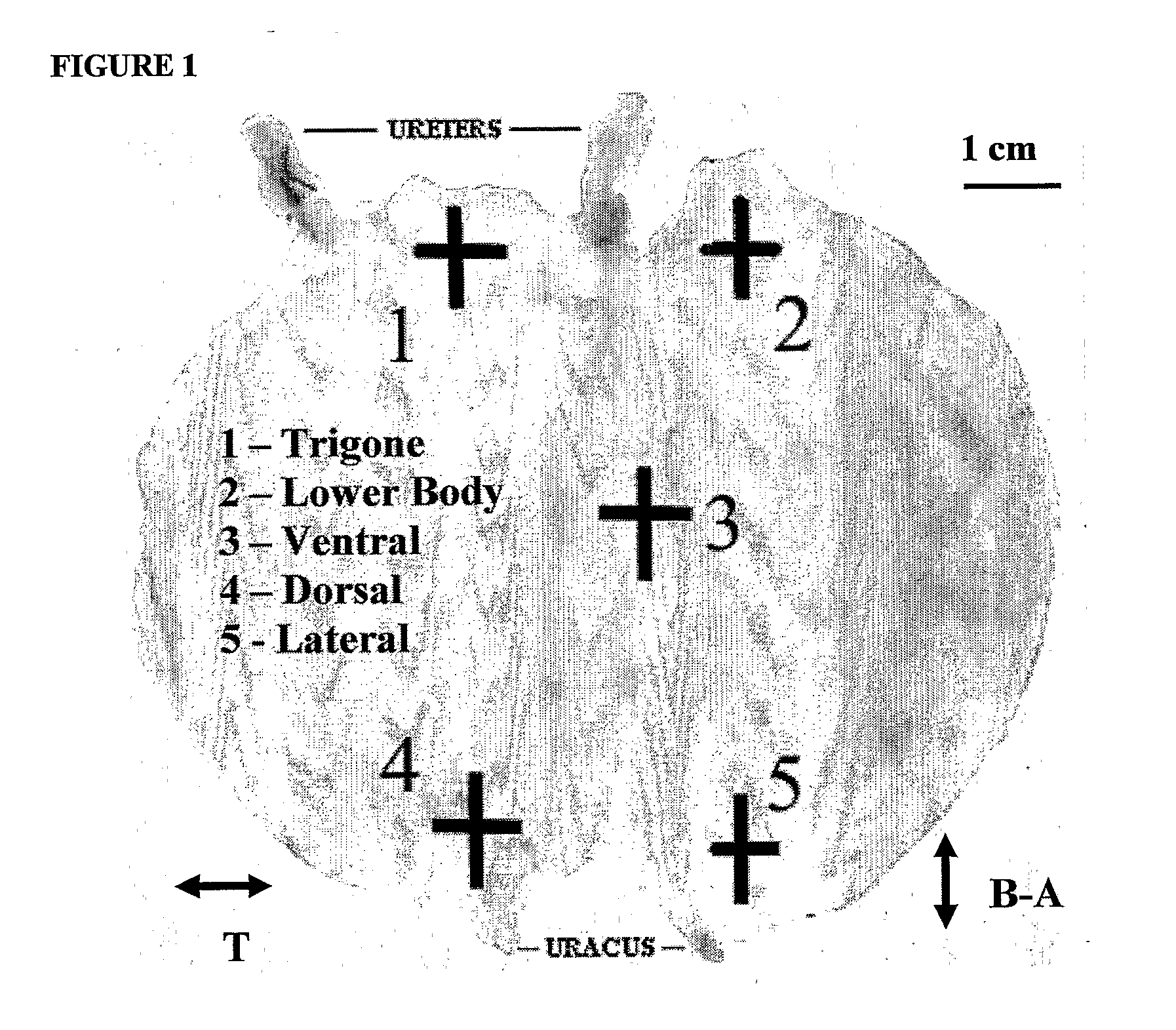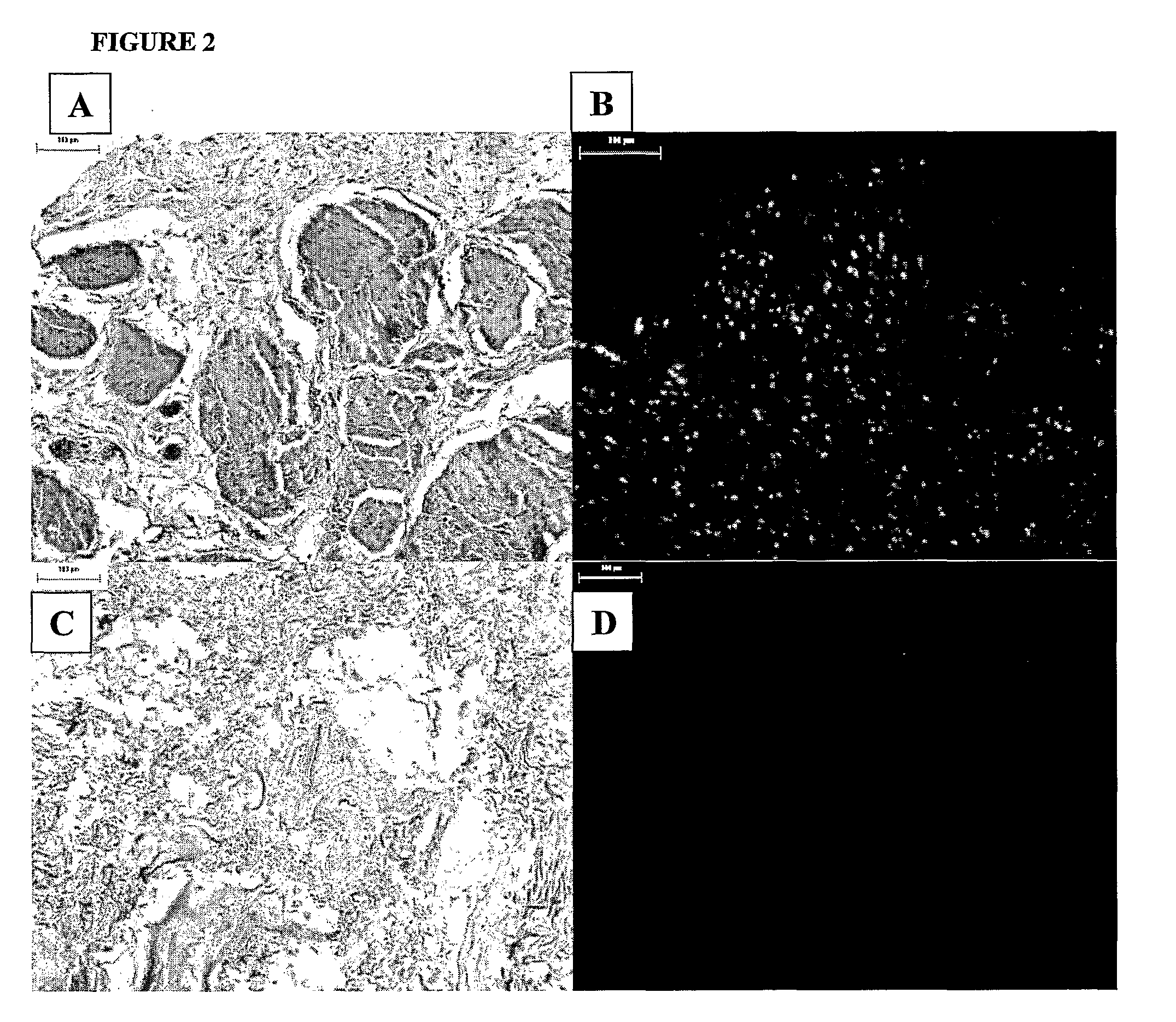Decellularisation of tissue matrices for bladder implantation
- Summary
- Abstract
- Description
- Claims
- Application Information
AI Technical Summary
Benefits of technology
Problems solved by technology
Method used
Image
Examples
example 1
[0131]The bladder wall is composed primarily of collagen, elastin, and smooth muscle and is organised in two major layers: the lamina propria and the detrusor. The lamina propria consists of the urothelium, which lines the luminal surface, and an underlying connective tissue matrix that contains a dense layer of randomly oriented collagen fibres in which the capillary network of the bladder is embedded. The majority of the lamina propria is constituted by a thick layer of collagen that functions to maintain the shape of the bladder wall and to limit its overall compliance (ratio of maximum volume divided by pressure). The detrusor muscle layer provides the contraction during voiding, and is composed of muscle fibres of 50 to 150 μm in diameter, and 20-50 μm apart and interconnected with collagen bundles. Histological analysis of the decellularised matrix showed that whilst the urothelium and smooth muscle cells had been removed, the underlying histoarchitecture was retained. (See FI...
example 2
[0132]Glycosaminoglycans (GAGs) are the main component of the ground substance in which cells, collagen (comprised of hydroxyproline, proline and glycine) and elastin fibres are embedded. Compared to fresh bladder tissue, the proportion of hydroxyproline and GAGs in decellularised tissue samples relative to total dry weight, was significantly higher due to the loss of other soluble proteins and cell components (Table 1). Table 1 below shows the biochemical characterisation of fresh and decellularised porcine bladder tissue.
TABLE 1Amount (μg / mg dry weight)FreshDecellularisedComponentbladder tissuebladder tissueTotal protein345(+ / −20.4)133.3(+ / −7.6)*DNA2.8(+ / −0.1)0.1(+ / −0.1)*Hydroxyproline46.8(+ / −2.0)82.0(+ / −4.3)*Denatured Hydroxyproline2.0(+ / −0.1)0.7(+ / −0.1)*Glycosaminoglycans20.9(+ / −1.7)53.2(+ / −3.1)*Results are presented as mean values (+ / −95% CI)*indicates significant difference (student's t-test, p
example 3
[0133]Tissue strips were dissected from the wall of fresh (within 24 h of slaughter) and decellularised bladders using a scalpel and subjected to low strain-rate uniaxial tensile loading to failure. In order to study potential regional differences in the biomechanics of the bladder wall, five anatomical regions were tested, including the dorsal, ventral, lateral, trigone and lower body regions of the wall (FIG. 1). In each region, the anisotropy of the bladder wall was investigated by testing specimens along the apex-to-base and transverse directions. For each case, tissue strips measuring 20×5 mm were dissected and mounted onto a purpose built titanium holder (Korossis et al J Heart Valve Dis 11, 463, 2002). The holder was supported by a removable aluminium bracket that allowed alignment of the two holder parts, defined the gauge length of the specimens and ensured that no load was imposed on the specimen until the start of the test. The gauge length of the specimens was defined by...
PUM
 Login to View More
Login to View More Abstract
Description
Claims
Application Information
 Login to View More
Login to View More - R&D
- Intellectual Property
- Life Sciences
- Materials
- Tech Scout
- Unparalleled Data Quality
- Higher Quality Content
- 60% Fewer Hallucinations
Browse by: Latest US Patents, China's latest patents, Technical Efficacy Thesaurus, Application Domain, Technology Topic, Popular Technical Reports.
© 2025 PatSnap. All rights reserved.Legal|Privacy policy|Modern Slavery Act Transparency Statement|Sitemap|About US| Contact US: help@patsnap.com



